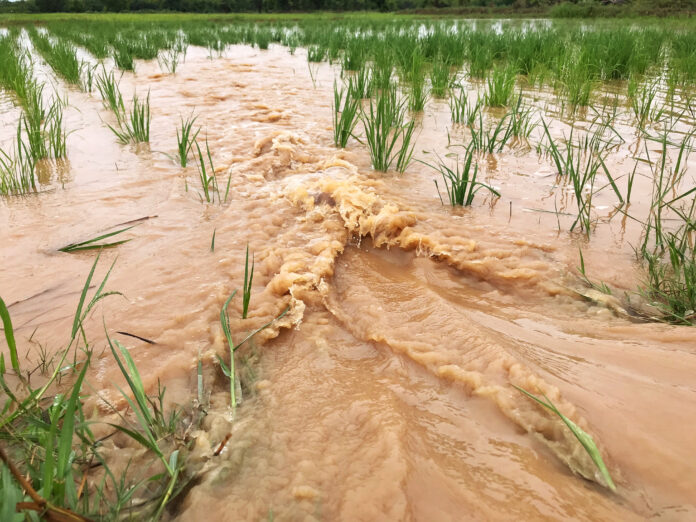Damage to the agriculture sector from the southwest monsoon and tropical cyclones Mirasol, Nando, and Opong has climbed to P5.01 billion, the Department of Agriculture (DA) reported in its noon advisory on Wednesday, October 8. The losses have affected 163,060 farmers across 126,585 hectares of farmland, with an estimated volume loss of 299,288 metric tons (MT). This figure marks a 71 percent increase from the P2.93 billion reported on October 3.
The most damaged sector was rice which accounted for P3.01 billion worth of losses across 94,231 hectares. Production loss was estimated at 216,562 MT. High-value crops such as vegetables, fruits, root crops, and spices followed, with losses estimated at P1.2 billion, while corn suffered P552.72 million in damage. The livestock and poultry sectors incurred P28.42 million in losses, affecting over 20,000 animals. Other damages include P5.82 million in cassava crops and P47.73 million worth of fish catch impacting more than 1,000 fisherfolk.
Some P149 million in irrigation facilities were wrecked, P7.38 million in agricultural infrastructure, and P7.87 million in machinery and equipment lost. Despite the scale of the destruction, the DA said that 88 percent of 111,681 damaged farms should recover.
The affected areas span across multiple regions, including the Cordillera Administrative Region, Ilocos, Cagayan Valley, Central Luzon, Calabarzon, Mimaropa, Bicol, Western and Eastern Visayas, Zamboanga Peninsula, Northern Mindanao, and Soccsksargen. The DA clarified that the reported figures are still subject to validation.
In response, the agency distributed P1 billion worth of agricultural inputs such as seeds, drugs, and biologics. Additionally, P786.9 million in insurance payouts have been released to nearly 87,000 insured farmers and fisherfolk through the Philippine Crop Insurance Corp. Affected producers also have access to the DA’s Survival and Recovery Loan Program, offering up to P25,000 in zero-interest loans payable over three years.
The DA continues to deploy Kadiwa rolling stores in affected areas to offer affordable food and is closely monitoring commodity prices, especially in localities under a state of calamity where price ceilings are in effect under the Price Act.







